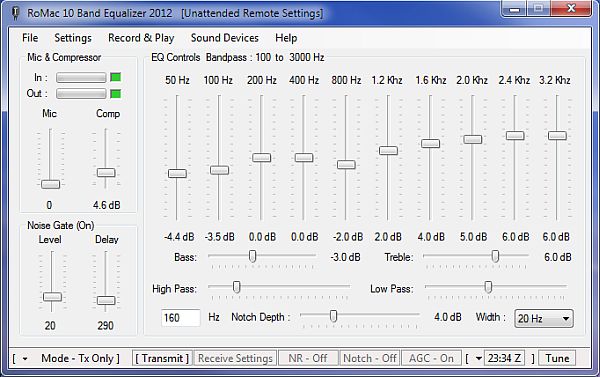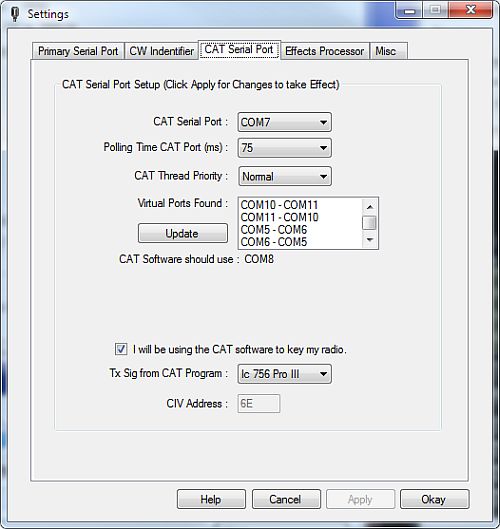Dec 14, 2012: Cezar and Johan have purchased their plane tickets. They will travel together from Buenos Aires on Dec 31, arriving in Puerto Madryn at 12:50 pm, early afternoon. Alex and Luc will arrive in Puerto Madryn the same day, and so the operating and logistical teams will spend the afternoon and evening together, going over the equipment, logistics, and contingency plans. We hope to be operating between Jan 2 and 6. Once again, we would like to remind everyone that this expedition includes some very difficult logistics. Consequently, the above dates are approximate and can change depending on the weather conditions. Moreover, there is no guarantee that the team will be able to land. Rest assured that for us the safety of everyone involved is paramount.
Monday, December 17, 2012
Monday, December 03, 2012
Ganzfeld experiment
In a typical ganzfeld experiment, a "receiver" is placed in a room relaxing in a comfortable chair with halved ping-pong balls over the eyes, having a red light shone on them. The receiver also wears a set of headphones through which white or pink noise (static) is played. The receiver is in this state of mild sensory deprivation for half an hour. During this time, a "sender" observes a randomly chosen target and tries to mentally send this information to the receiver. The receiver speaks out loud during the thirty minutes, describing what he or she can see. This is recorded by the experimenter (who is blind to the target) either by recording onto tape or by taking notes, and is used to help the receiver during the judging procedure.
In the judging procedure, the receiver is taken out of the ganzfeld state and given a set of possible targets, from which they must decide which one most resembled the images they witnessed. Most commonly there are three decoys along with a copy of the target itself, giving an expected overall hit rate of 25% over several dozens of trials.
LoggerXP
Appendix "LoggerXP" - a modern logger amateur radio station. The basic features of the program you can use it in their daily work, the work of the various degree programs. With the help of "LoggerXP" you can keep track of QSO, to work on degree programs, account QSL-cards, report, print reports, QSL-cards etc. In this case, "LoggerXP" has a modern and intuitive user interface. "LoggerXP" is based on the technology of plug-ins, so you can add new features. For this search, download and install the plug-ins. Plug-ins - these are special files. Plugins can be downloaded from the site http://radiosoft.info . If you are a programmer writing in Delphi, you can adapt the "LoggerXP" "by itself", add the desired function.
In "LoggerXP" used a different approach to the principles of the diploma program. Due to this, the number of degree programs is almost unlimited. Degree programs you can download from the developer, or make them yourself with the manager of diplomas. During logging "LoggerXP" QSO and analyze all appropriate ones buried in the right graduate program.
If you're going on a trip in the country, in radio expeditions, but with "LoggerXP" you're only working on a home computer, and the trip would take a laptop, without losing any data, certificates and settings - do not worry! "Master transfer data and settings" will solve your problem. Similarly, you can save all your data and settings "LoggerXP" when you reinstall of Windows.
If your family you are not one who works in the air, for each user "LoggerXP" you can create a separate profile with individual settings, logs and diploma programs.
You are going to an important event and you're afraid to miss? "LoggerXP" has organizer that will remind you of upcoming events.
Appendix "LoggerXP" has full compatibility with the service eQSL. You can instantly exchange QSL-cards through this service and download the resulting images QSL-cards.
To date, "LoggerXP" is the most convenient printing system QSO and QSL-cards. C s QSL-cards must first be created using the application "QSL - studio". This application will allow you to download http://radiosoft.info .
Tuesday, November 27, 2012
Friday, November 23, 2012
Monday, November 12, 2012
Tuesday, November 06, 2012
LU6W IOTA SA-096
We are pleased to announce that an IOTA expedition to Escondida Is. (SA-096) is scheduled to take place in early January 2013 under the auspices of the Radioclub de Puerto Madryn. A team of four operators, including Cezar/VE3LYC, Johan/PA3EXX and two LU radioamateurs will attempt to maintain two stations on the air for up to 4 days, operating on all bands from 10 to 40 m, CW and SSB. The team applied for the special callsign LU6W.
Wednesday, October 24, 2012
HackRF is a radio for all frequencies
HackRF project goals:
- transmit and receive
- operating frequency: 100 MHz to 6 GHz
- maximum sample rate: 20 Msps
- resolution: 8 bits
- interface: High Speed USB
- power supply: USB bus power
- portable
- open source hardware and software
- low cost
Saturday, October 20, 2012
News from P29NI
20-Oct: "We are all aboard M/V Barbarian. Sailed from Rabaul at 00:30 gmt today bound for 1st IOTA via Kavieng. Distance 210nm" (website)
Monday, October 15, 2012
Tuesday, October 09, 2012
Pileup Runner 1.3
This program is for the existing and future DX-pedition operators, and for those who are curious how it feels to manage a pileup.
FREEWARE
High Scores
| # | Call | Score | Date |
| 1 | RW3FB | 113 | 2012-10-09 |
| 2 | HA5KQ | 111 | 2012-10-08 |
| 3 | LU2EMH | 109 | 2012-10-08 |
| 4 | VE3NEA | 106 | 2012-10-08 |
| 5 | HA2EOU | 96 | 2012-10-08 |
| 6 | EW4DX | 95 | 2012-10-08 |
| 7 | RW4PL | 94 | 2012-10-07 |
| 8 | R8OA | 91 | 2012-10-09 |
| 9 | IZ5EKV | 87 | 2012-10-07 |
| 10 | ER3AU | 78 | 2012-10-07 |
| 11 | SV2KBS | 77 | 2012-10-08 |
| 12 | IZ5BRW | 66 | 2012-10-09 |
| 13 | RA3TT | 61 | 2012-10-07 |
| 14 | EA8AY | 55 | 2012-10-06 |
| 15 | AF7S | 41 | 2012-10-08 |
| 16 | SV2HWR | 36 | 2012-10-08 |
Monday, October 08, 2012
Sunita Williams dalla ISS in contatto radio con Pavia
Gli studenti del liceo "Adelaide Cairoli" di Pavia, martedì 9 ottobre parleranno con l'astronauta NASA Sunita Williams attualmente a bordo della Stazione Spaziale Internazionale (ISS). L'appuntamento è per martedì 9 ottobre alle ore 12h00 CEST (10h00 UTC). Potete seguire il collegamento in diretta sul sito AMSAT Italia (fonte)
Credits: NASA
Wednesday, October 03, 2012
SW radar for new views of Earth?
As part of ESA’s continuing efforts to develop new and better instruments for observing Earth from space, a field experiment has been exploring a very short radar wavelength – only 8.5 mm – called Ka-band.
Since it can offer both very high-resolution images and precise measurements of surface height at the same time from one satellite, scientists and engineers believe that it could be suitable for a wide range of environmental applications – from measuring ocean currents across the globe to monitoring changes in mountain glaciers. READ MORE
Image credit: Onera
Riviste HAM: le copertine
QST (ARRL)
RADCOM (RSGB)
RadioREF (REF)
Radio Rivista (ARI)
Ma come le fanno le copertine in ARI ? Con word, powerpoint, excel ?
Ma per carità, siamo a dei livelli veramente da principianti!
Clandestine and Opposition Shortwave Broadcast Guide
“Clandestine and Opposition Shortwave Broadcast Guide” by Steven Handler is available from Amazon.com (Kindle eBook). Published in late September 2012, it contains a detailed list of clandestine and opposition shortwave broadcasters listed by time (GMT).
Included are frequencies, and for most of the listings, the target of the broadcaster, transmitter sites and other information.
There are also several chapters with information about the operations of several of these broadcasters.
Another Chapter covers QSLing clandestine and opposition shortwave stations and provides a number of postal or email address.
The price is $3.99. For more information, including sample pages visit Amazon.com, Amazon.de or Amazon.com.uk.
Amazon stock number is ASIN: B009HC5ESU
Thursday, September 27, 2012
I5JHW nel team di Clipperton 2013
Oggi ho ricevuto la telefonata di Giovanni Bini, I5JHW che mi informava di esser stato invitato da Bob KK6EK ad unirsi al team di Clipperton 2013. Congratulazioni a Giovanni. L'Italia sarà orgogliosamente rappresentata da un validissimo OM !
Tuesday, September 25, 2012
RADIOBOSS - Radio automation software
Traditional professional radio programming applications are designed for traditional radio stations that can and expect to pay thousands of dollars for extremely sophisticated and complex software. But what if that's not you?
If you need a simple, affordable, reliable solution to automating your broadcasting needs, RadioBOSS is the solution you've been looking for.
Whether it's building and scheduling crossfaded programming for your terrestrial or Internet radio station, creating the right audio atmosphere in your restaurant or store, or broadcasting from live events, RadioBOSS has been the choice of thousands of broadcasters just like you for the past seven years.
RadioBOSS makes it easy and fast to convert and manage audio assets, build playlists with advertising support, hourly blocks, rotations, crossfading, automatic leveling and other professional-level features and play your playlists to your local, terrestrial or Internet broadcasting system.
WEBSITE
Six P29 islands soon on the air
An international team will visit 6 islands belonging to Papua New Guinea between 19 October and 13 November.
The team will be:
G3KHZ Derek, SM6CVX Hans, HB9BXE Hans-Peter, K5WQG Eddy, DL6KVA Axel, Non-ham Stig Nyman. M/V Barbarian will convey the team, starting from Kokopo in New Britain on 18 November sailing via Kavieng to Emirau. The islands to be activated by the full team will be:
The main team fly home on 6th November. Hans and Stig then continue to Buka on the M/V Barbarian to Buka. The remaining journey will be by air.
Website: http://p29ni.yolasite.com/
Monday, September 17, 2012
Image Communication on Short Waves
Welcome to the free ham radio handbook for SSTV, WEFAX and digital SSTV.
"I'd like to introduce the e-book for ham radio operators and radio listeners interested in special communication modes for image transmission – SSTV, radio facsimile (WEFAX) and digital SSTV (HamDRM).
The original e-book was written in Czech and I decided to prepare the English translation by myself. So, here it is, the first draft. The translation is almost done, but it needs a revision. You are welcome to participate on proofreading, give feedbacks or information updates.
I decided to make the book available for free downloading. It is the best way to spread the book among interested readers. I believe that the traditional distribution model where the author sells the rights to a publisher and the publisher makes prints an sells the book is almost obsolete nowadays. As the author I can prepare the text, images, typography layout by myself and it is also very easy to a create distribution channel – this web page.
If you find the book useful and want to support the author, you can send donations via PayPal. Thank you.
VY 73!
Martin OK2MNM"
Thursday, September 06, 2012
RUMped: dxped & contest logging for Mac.

RUMped is a dx-pedition and contest logging tool for short wave for the Mac. Currently RUMped supports a DX-pedition mode, major contests and a general contest mode for unsupported contests. Further you can create your own contest rules. RUMped can use cocoaModem2.0 as modem for RTTY, BPSK and Hellschreiber.
Log Features
• Real time computation for multipliers and points
• Partial call check during typing, multiple master databases are included.
• Similar call check
• Prev. QSO check
• ESM mode (,Enter‘ sends messages)
• Auto cq
• CW out via WinKeyer or K2/K3
• CW type-ahead function (WinKeyer only)
• TRX control
• Work all operating modes in the same interface
• Multiple (scrolling) band maps
• DX Cluster via Telnet integrated
• DXCC ,CQ/ITU-zone, heading and distance calculations
• Continent, callsign, rates, DXCC, multiplier and best time statistics
• Keyboard mode for CW and RTTY
• Grayline map and other tools for grayline dxing
• Memory pad for S&P
• Log export in ADIF, Cabrillo, Stützerbach, text, csv and DF3CB logsearch
Wednesday, September 05, 2012
Tuesday, September 04, 2012
Firedrake – China’s Secret Shortwave Jamming Project Exposed!
by Steven Handler is the new revised and updated version of this electronic publication. Published in late August, 2012, it is now available through Amazon.com for the Kindle. Other booksellers should, by Mid September, 2012, be offering versions for other electronic readers including the Nook, iPad, Sony Reader and other formats.
A little “Firedrake” History-The Chinese government jams or interferes with the HF broadcasts of certain shortwave stations that they apparently deem “dangerous” for their citizens to hear. My publication serves as a guide to the world of Chinese jamming and helps the reader learn about Firedrake and some of China’s other shortwave jamming stations.
Included are jamming frequencies heard during the current A-11 shortwave broadcasting season as well as times of reception. Also included are frequencies heard in use during the past two shortwave broadcasting seasons (A-11 and B-11). Readers will also find information about the direction finding results identifying transmitter sites which I obtained from ITU registered monitoring sites. There is also a virtual tour of a Chinese jamming facility.
Available for $3.99 from Amazon.com (stock number ASIN: B0093NNABQ ) you can find more information and view sample pages at Amazon.com. Click Here
Monday, September 03, 2012
Friday, August 31, 2012
Apollo 11 complete Spacecraft Commentary (PDF)
This is the complete Commentary of Apollo 11 Mision. July 16-24, 1969 (PDF)
Read what Neil Armstrong said while walking on the moon.
LINK
Wednesday, August 29, 2012
Wednesday, August 22, 2012
Affordable, Electronic Beam Steering Antennas For Satcoms
The Portable Satellite Hotspot (PSH) is intended to be a laptop-sized product (Figure P-1) that is extremely easy to use, delivering DSL-like data rates at price points on par with 3G cellular data services. Typically, the PSH would be placed on a surface outside, and the user would then rotate it until the appropriate satellite was detected. During this rough alignment period, the receive beam would automatically be in wide search mode and the user would hear an audio tone or a display would indicate when the signal was strongest. Rough manual alignment to +/-20 degs. of the satellite should be adequate. At this point, the beam shape would automatically switch from wide mode to narrow mode, locking onto the satellite with both transmit and receive systems activated. The PSH would then be ready to use. LINK
Tuesday, August 21, 2012
Monday, August 13, 2012
Win an amazing trip to Chile
ESO builds and operates some of the most advanced telescopes on Earth including the Very Large Telescope (VLT) at the Paranal Observatory. These huge machines have made many fascinating discoveries about the Universe. Now, for the first time in its history, you can decide what to observe with the VLT, or even win an amazing trip to Chile’s breathtaking Atacama Desert to help make the observations yourself.
Friday, August 10, 2012
7Z7AB Al-Dhahrah Island AS-190
A team consisting of HZ1BF, 7Z1CQ, 7Z1SJ, HZ1MD, HZ1BW, HZ1HN, HZ1AR, HZ1DG, HZ1FS and HZ1TL will activate Al-Dhahrah Island AS-190 using the callsign 7Z7AB. The DXpedition will start on 2012/10/05 until 2012/10/11.
Wednesday, August 08, 2012
Tuesday, August 07, 2012
The PISCES Project
The Pacific Islands Schools, Connectivity, Education, and Solar (PISCES) Project is a multi-stakeholder endeavor that focuses on using partnerships for local skill-building and technology training in both the Federated States of Micronesia and Guam. We hope to demonstrate a complete, replicable model for bringing solar powered computer-related technology and Internet connectivity to underserved schools and communities.
The project is about far more than just technology: Training, skill-building, and partnerships are all equally important components of the endeavor. The first half of the project is a workshop in solar-powered long-distance wireless connectivity held at the University of Guam. Among other hands-on activities, workshop participants will install two permanent long distance solar-WiFi connections on the Univ. of Guam campus.
The project’s second half, in Chuuk, Micronesia includes a technology deployment on the remote island of Udot as well as the team’s participation in the Department of Education’s Summer Institute for teachers and administrators in the capital city, Weno. Our team will first deploy a Solar-Computer-Lab-in-a-Box and establish solar powered long distance WiFi connectivity at Udot Primary school, then speak with teachers and administrators from across the state at the Summer Institute, gauging their interest in and attitudes toward technology.
Remote islands face many challenges when adopting new technologies and establishing connectivity to the rest of the world. The PISCES Project’s knowledge-sharing, training, and partnering experiences are designed to foster local capacity-building necessary to harness technologies and practices that can link those in the South Pacific to the rest of the globe.
Monday, August 06, 2012
The RoMac 10 Band Equalizer 2012
The RoMac 10 Band Equalizer 2012 coupled with your present computer's soundcard, affords you the finest Windows based digital equalizer made for the Amateur Radio community.
Using professional techniques such as audio equalization will enhance the audio quality of your signal. The RoMac 10 Band Equalizer 2012 is like having a full featured audio studio in one package.
Although the RoMac 10 Band Equalizer 2012 has many off the same features as the original Legacy RoMac 10 Band Equalizer. Under the hood, it's all brand new. Built with the latest .NET Framework from Microsoft, it is much less prone to audio glitches, and the user interface is cleaner and simpler.
Thoroughly tested. It has been use daily use in at my station for almost 6 months.
The RoMac 10 Band Equalizer 2012 has ten separate equalizer bands, with a generous plus or minus 16 dB of range and general bass and treble controls, to ensure that you have complete control over how your audio sounds. Variable high and low Pass settings for transmit audio.
The RoMac10 Band Equalizer 2012 keeps separate equalizer settings for both your transmit and receiver audio.
The audio compressor has been re-worked to ensure very low distortion levels, while effectively increasing your average power.
Receive audio has 6 fully adjustable brick wall audio filters, automatic notch filter, and a very effective Noise Reduction.
You can select just to use just equalize your transmit, or just the receive DSP filtering and equalizing, or both. Utilizing just the equalizer for transmit will require at least, an audio isolation transformer between your transceiver and the sound card. Using the equalizer for receiving only only requires an audio cable from your receivers audio output to the soundcard's Line In. Most users with a newer transceivers with their own DSP filtering, will find the receive filtering redundant and not necessary.
Fully adjustable effects processing. Adding small amounts of reverberation can add "presence" to your transmitted audio.
Fully programmable automatic CW identifier and tuning Pulser. 160 Hz notch aka "Feedback Destroyer". Up to 20 dB of attenuation at any frequency, with variable bandwidths of 10 Hz to 60 Hz in 10 Hz increments.
A notch at 160 Hz is very useful to reduce the "boominess" when enhancing the bass (bottom end) when utilizing audio bandwidths that are typically used is SSB transmissions.
Record and playback audio from your microphone or receiver audio. Great for setting up the equalizer to get that audio just right. Record the audio before or after any processing done by the software. Record off the air so a friend can hear how he sounds.
MORE HERE
Using professional techniques such as audio equalization will enhance the audio quality of your signal. The RoMac 10 Band Equalizer 2012 is like having a full featured audio studio in one package.
Although the RoMac 10 Band Equalizer 2012 has many off the same features as the original Legacy RoMac 10 Band Equalizer. Under the hood, it's all brand new. Built with the latest .NET Framework from Microsoft, it is much less prone to audio glitches, and the user interface is cleaner and simpler.
Thoroughly tested. It has been use daily use in at my station for almost 6 months.
The RoMac 10 Band Equalizer 2012 has ten separate equalizer bands, with a generous plus or minus 16 dB of range and general bass and treble controls, to ensure that you have complete control over how your audio sounds. Variable high and low Pass settings for transmit audio.
The RoMac10 Band Equalizer 2012 keeps separate equalizer settings for both your transmit and receiver audio.
The audio compressor has been re-worked to ensure very low distortion levels, while effectively increasing your average power.
Receive audio has 6 fully adjustable brick wall audio filters, automatic notch filter, and a very effective Noise Reduction.
You can select just to use just equalize your transmit, or just the receive DSP filtering and equalizing, or both. Utilizing just the equalizer for transmit will require at least, an audio isolation transformer between your transceiver and the sound card. Using the equalizer for receiving only only requires an audio cable from your receivers audio output to the soundcard's Line In. Most users with a newer transceivers with their own DSP filtering, will find the receive filtering redundant and not necessary.
Fully adjustable effects processing. Adding small amounts of reverberation can add "presence" to your transmitted audio.
Fully programmable automatic CW identifier and tuning Pulser. 160 Hz notch aka "Feedback Destroyer". Up to 20 dB of attenuation at any frequency, with variable bandwidths of 10 Hz to 60 Hz in 10 Hz increments.
A notch at 160 Hz is very useful to reduce the "boominess" when enhancing the bass (bottom end) when utilizing audio bandwidths that are typically used is SSB transmissions.
Record and playback audio from your microphone or receiver audio. Great for setting up the equalizer to get that audio just right. Record the audio before or after any processing done by the software. Record off the air so a friend can hear how he sounds.
MORE HERE
Friday, August 03, 2012
Understanding LF and HF Propagation ebook
"In 2008/2009 Alan Melia G3NYK and I wrote a series of features on understanding LF and HF propagation for the Radio Society of Great Britain's (RSGB) "RadCom" magazine.
My features consisted of a month-by-month look at each HF band in turn, showing the reader the propagation modes behind each band and explaining some of the technicalities of ionospheric propagation.
I looked at the D, E and F layers, Sporadic E, the MUF/LUF, using solar data, propagation programs, NVIS and much more.
Alan then took over and wrote three detailed features on LF propagation. We are told that the features were well received and as a result I have managed to persuade the RSGB to allow me to put them together into a single document, which is now freely available for amateurs worldwide to download.
I hope you enjoy it."
Steve G0KYA
Subscribe to:
Posts (Atom)






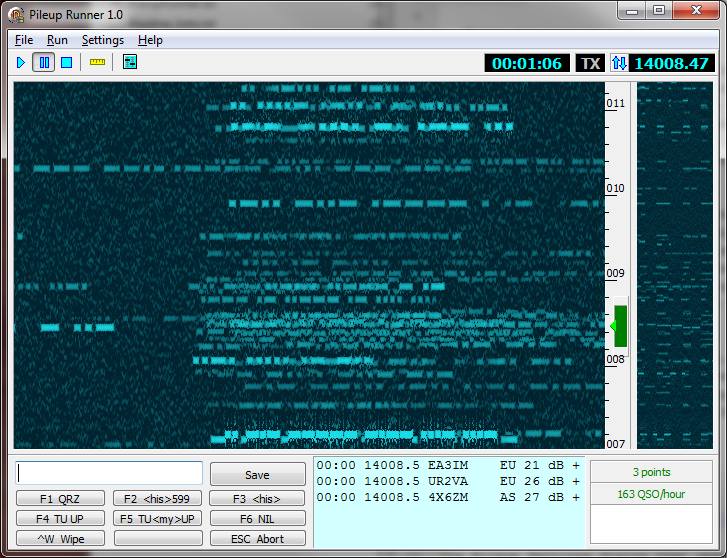
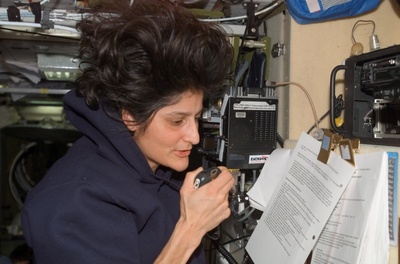


















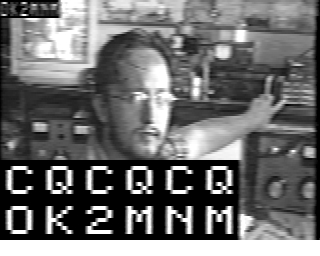








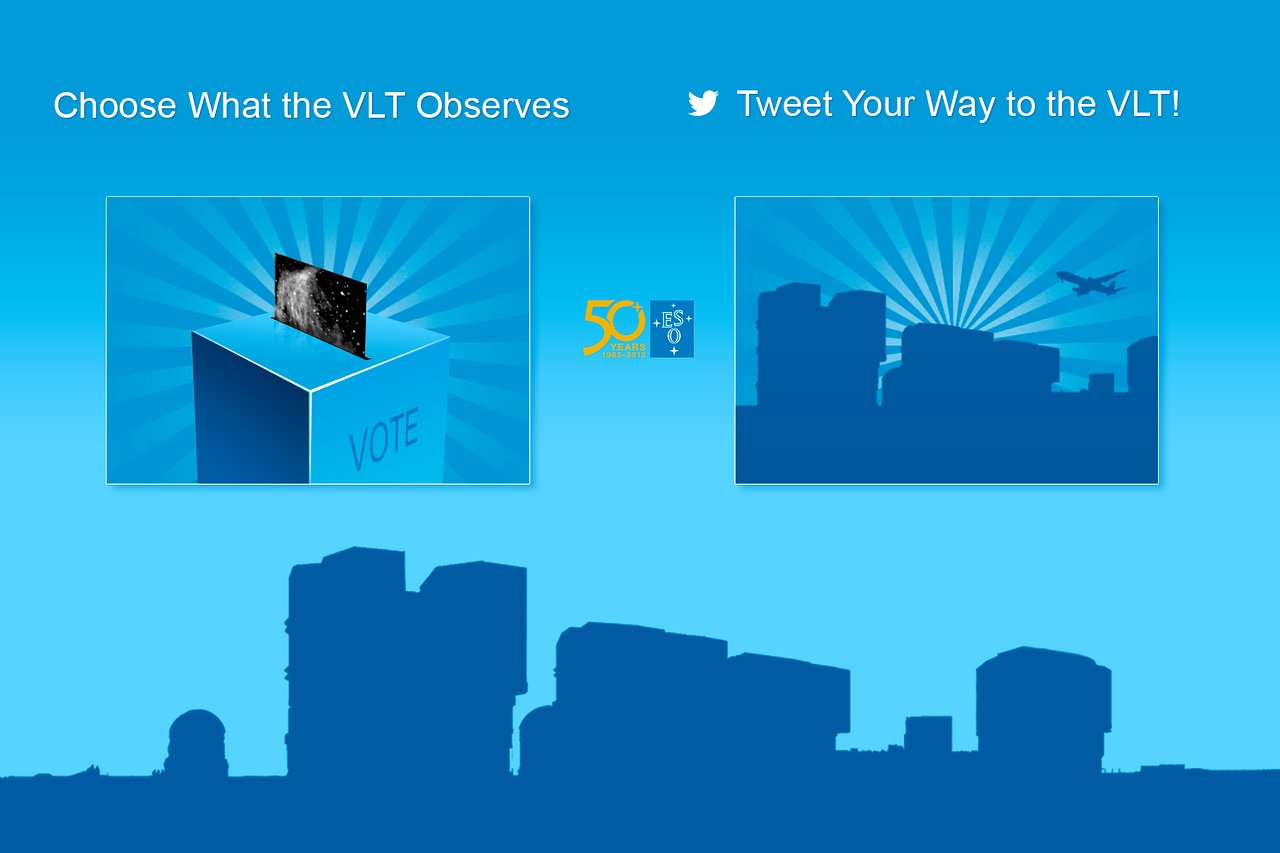




_(1024x678).jpg)
_(1024x768).jpg)

